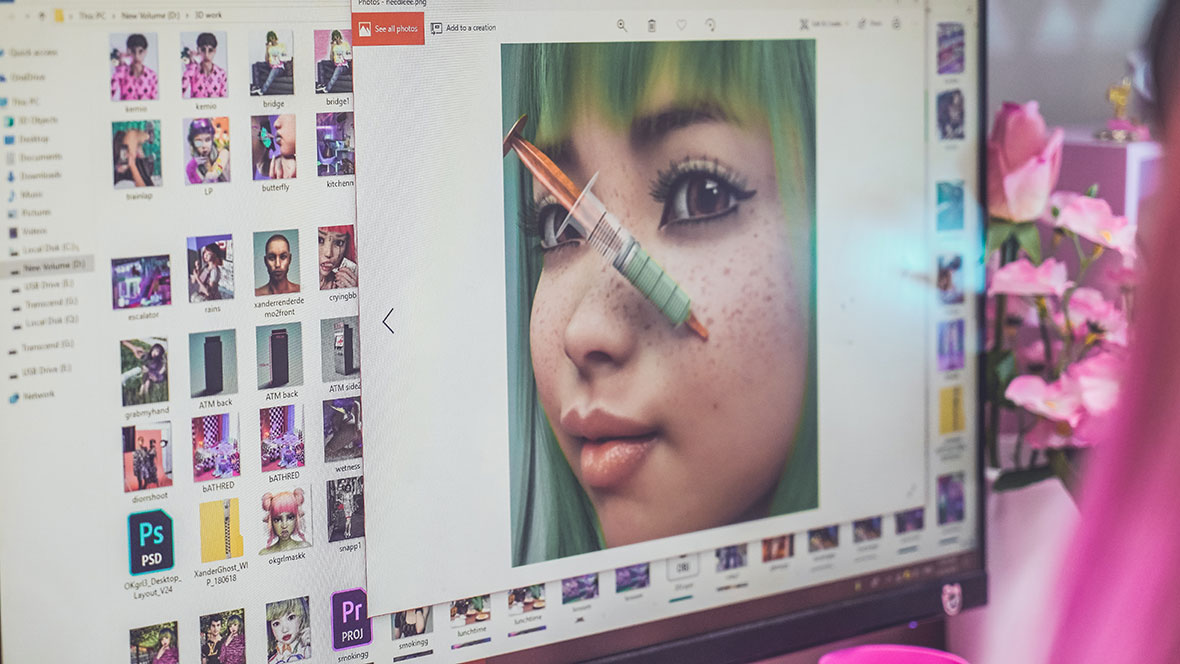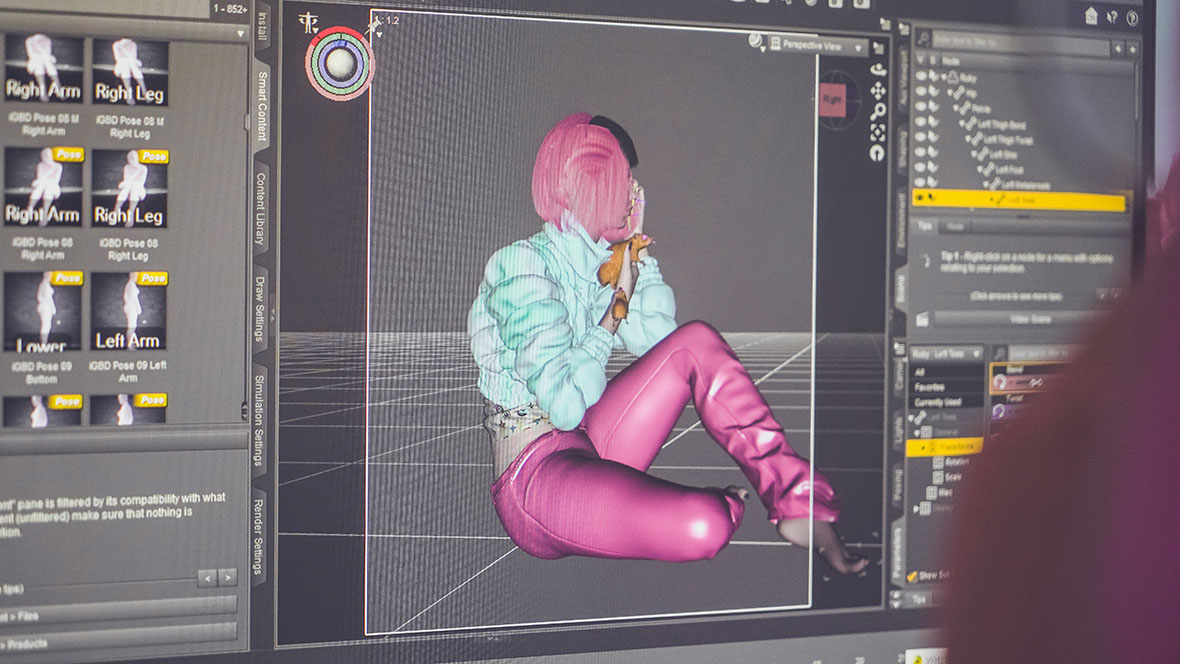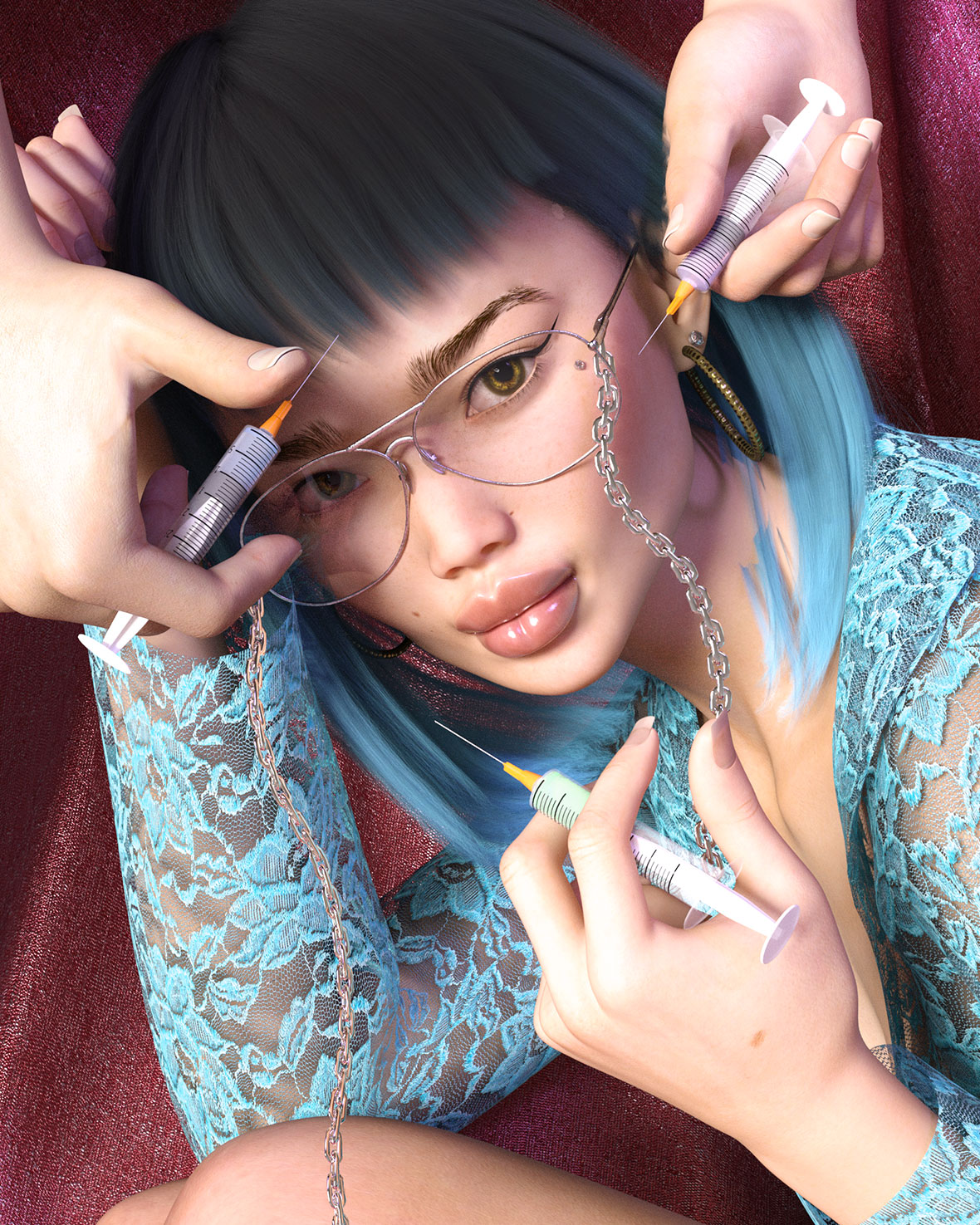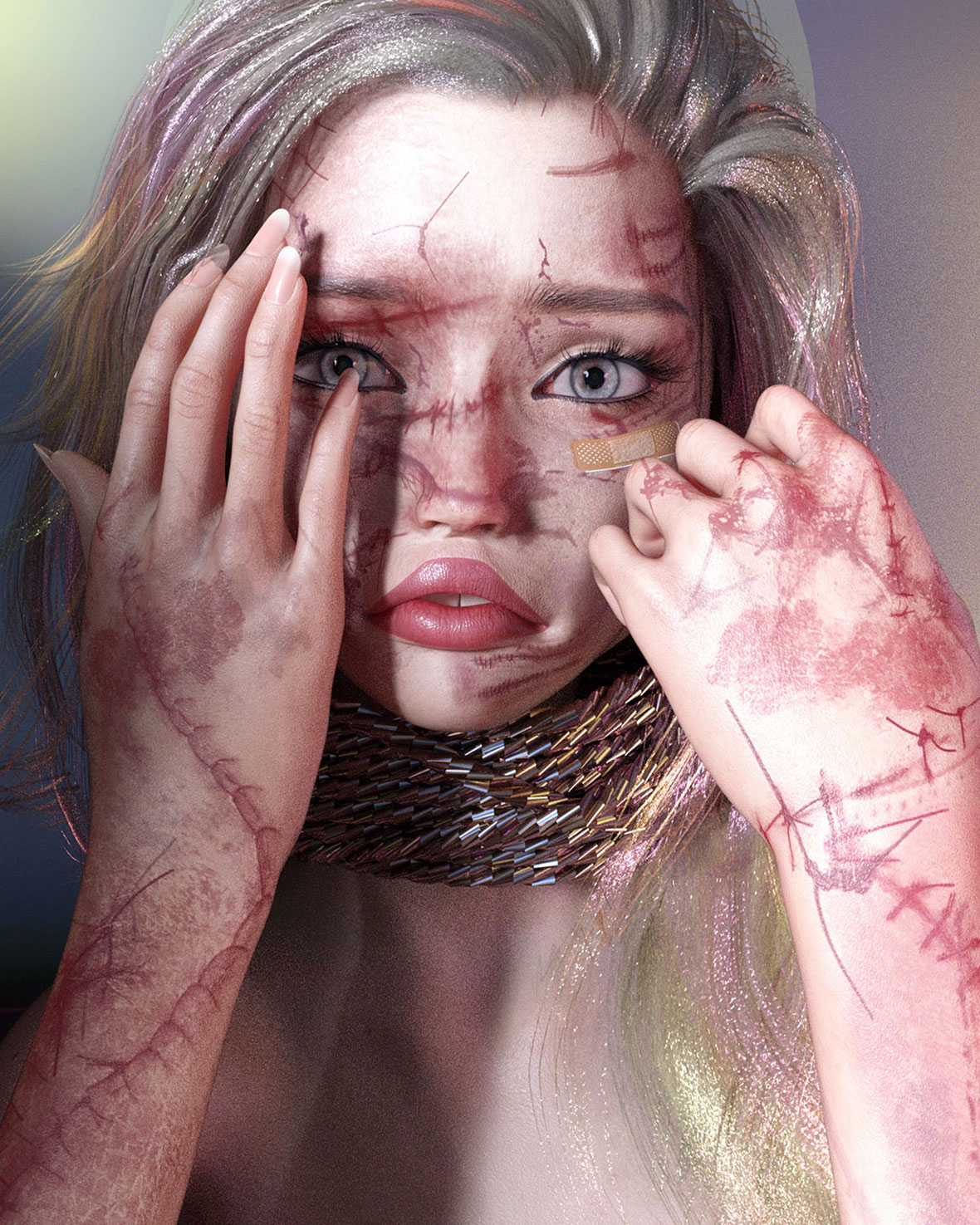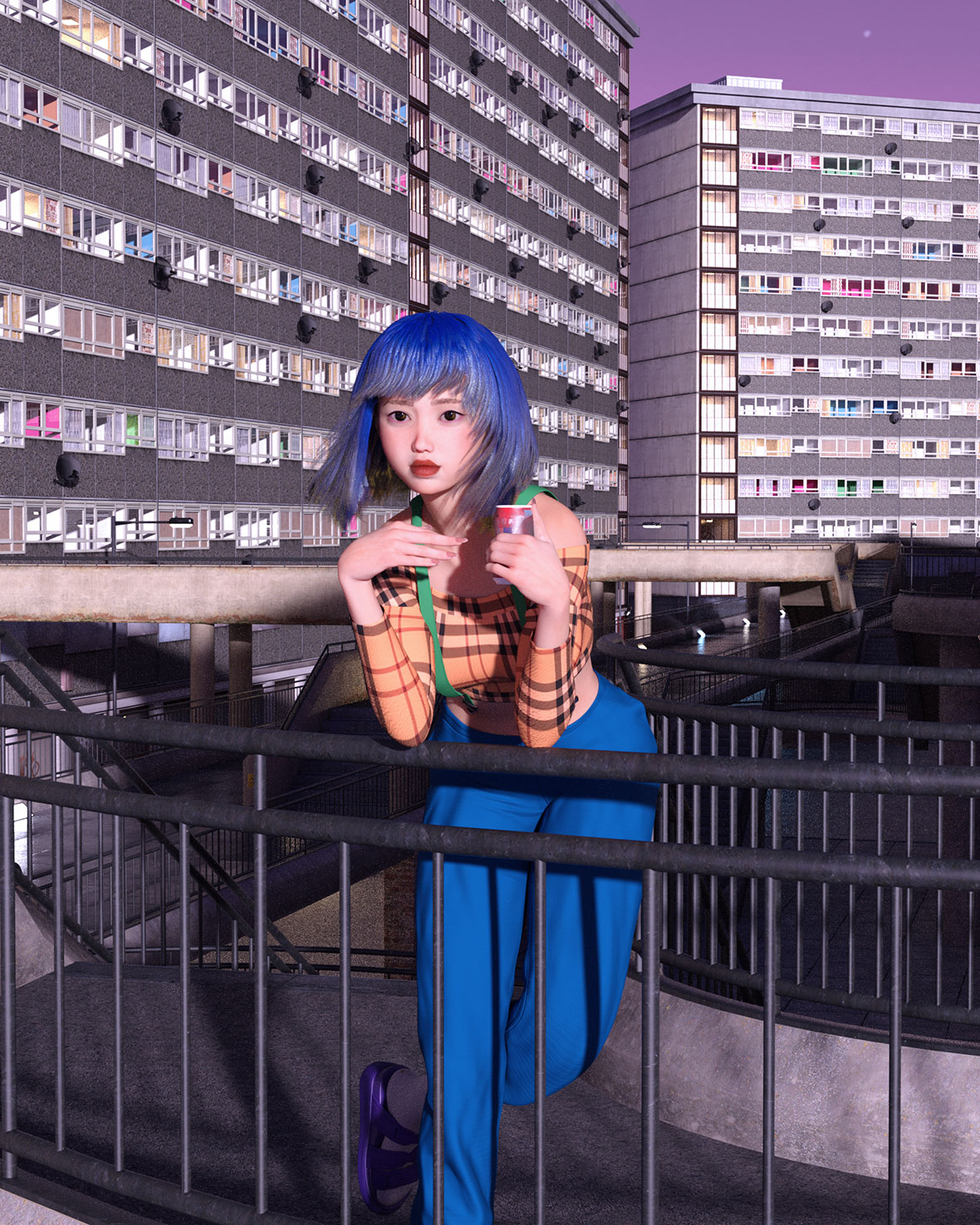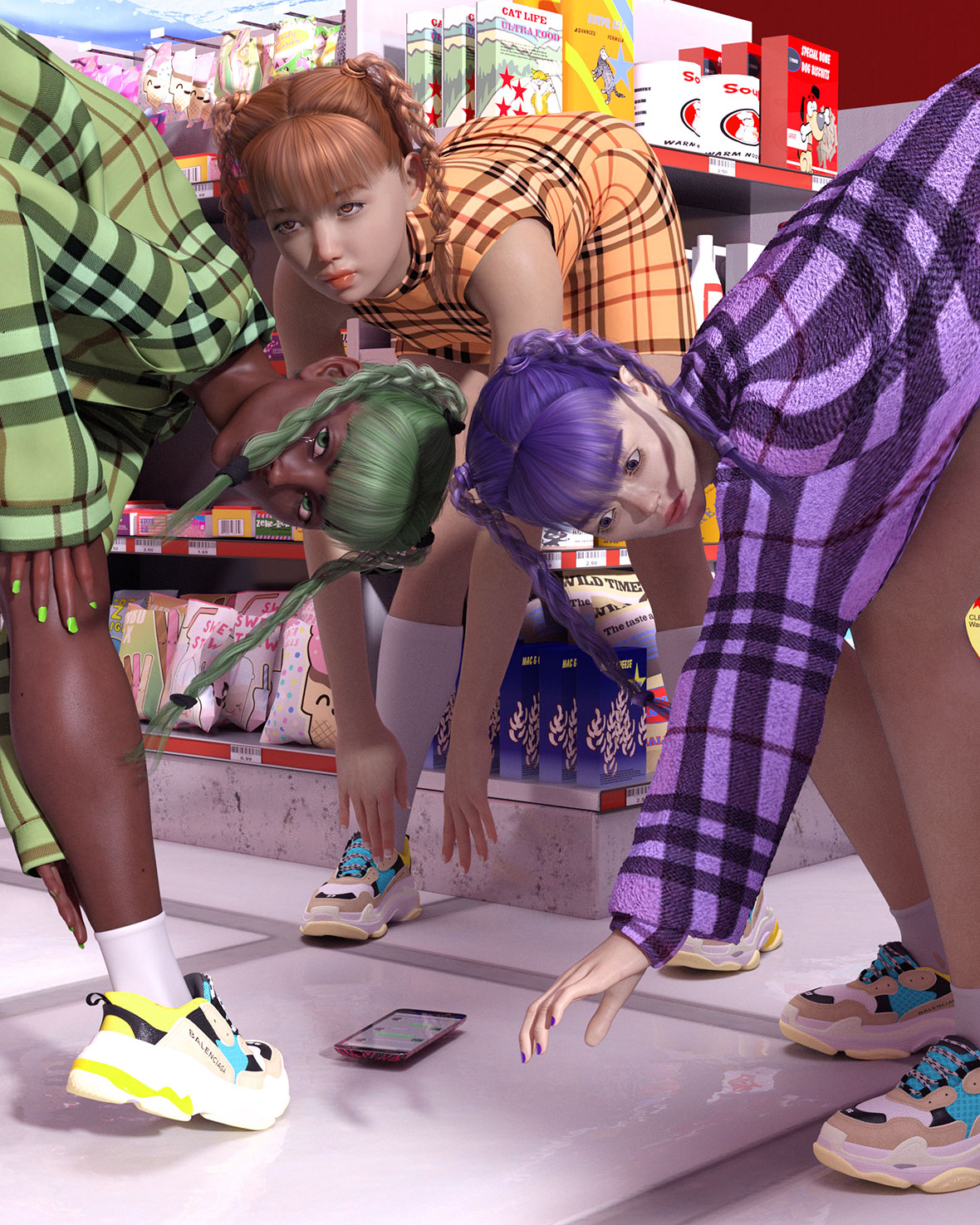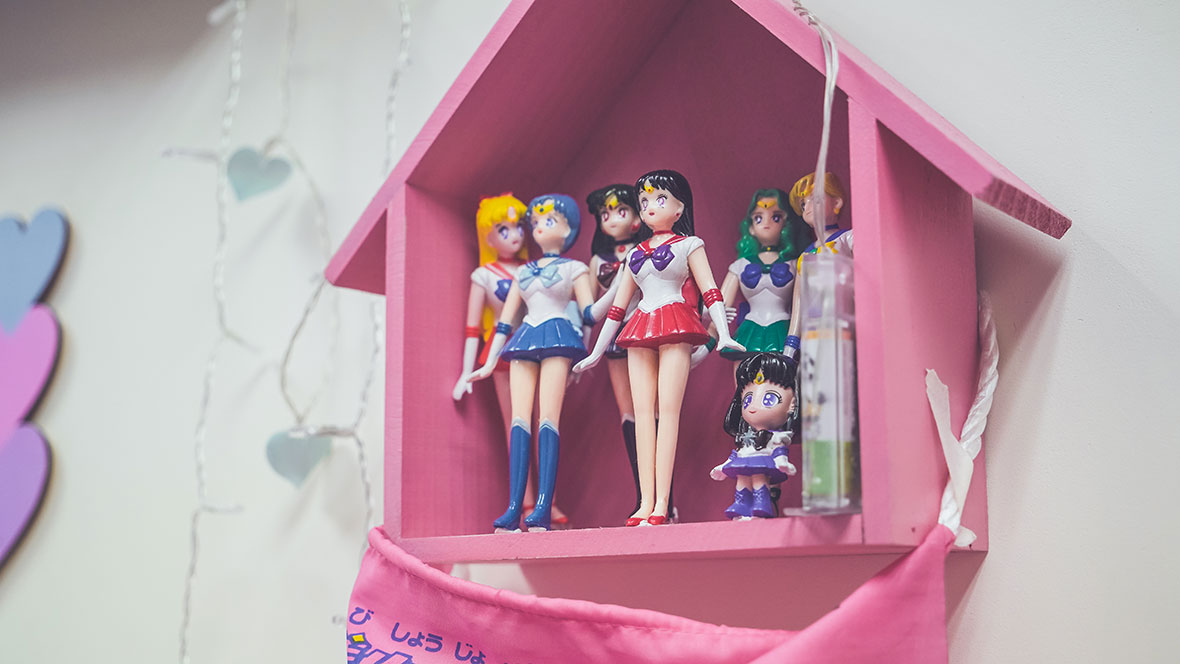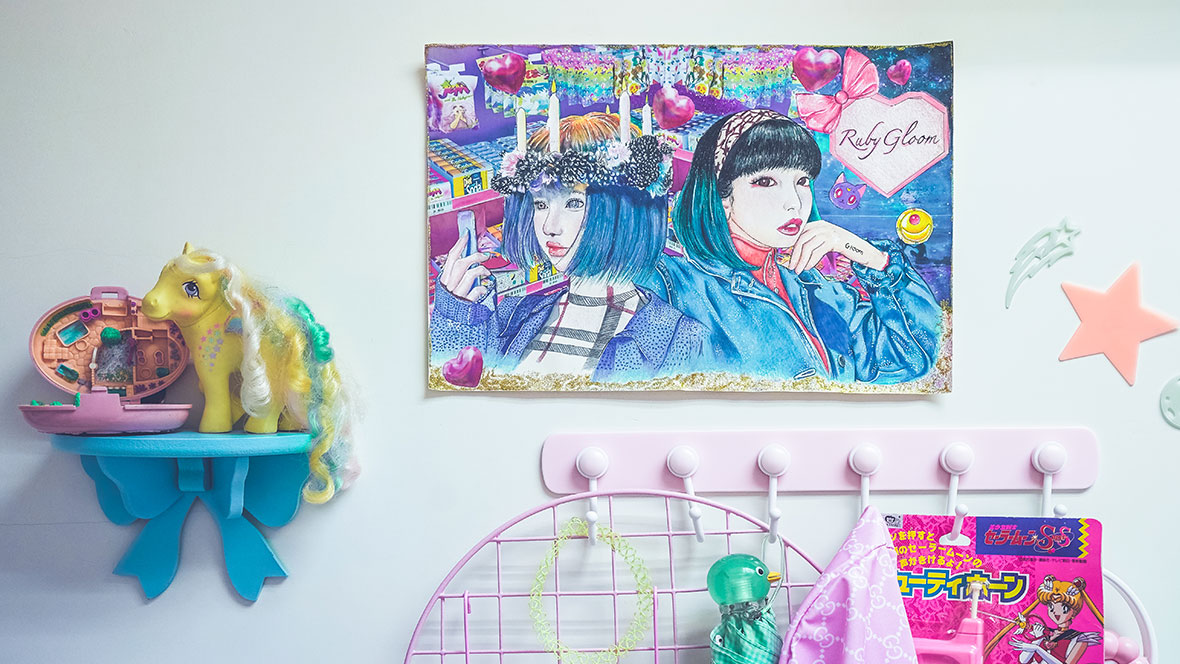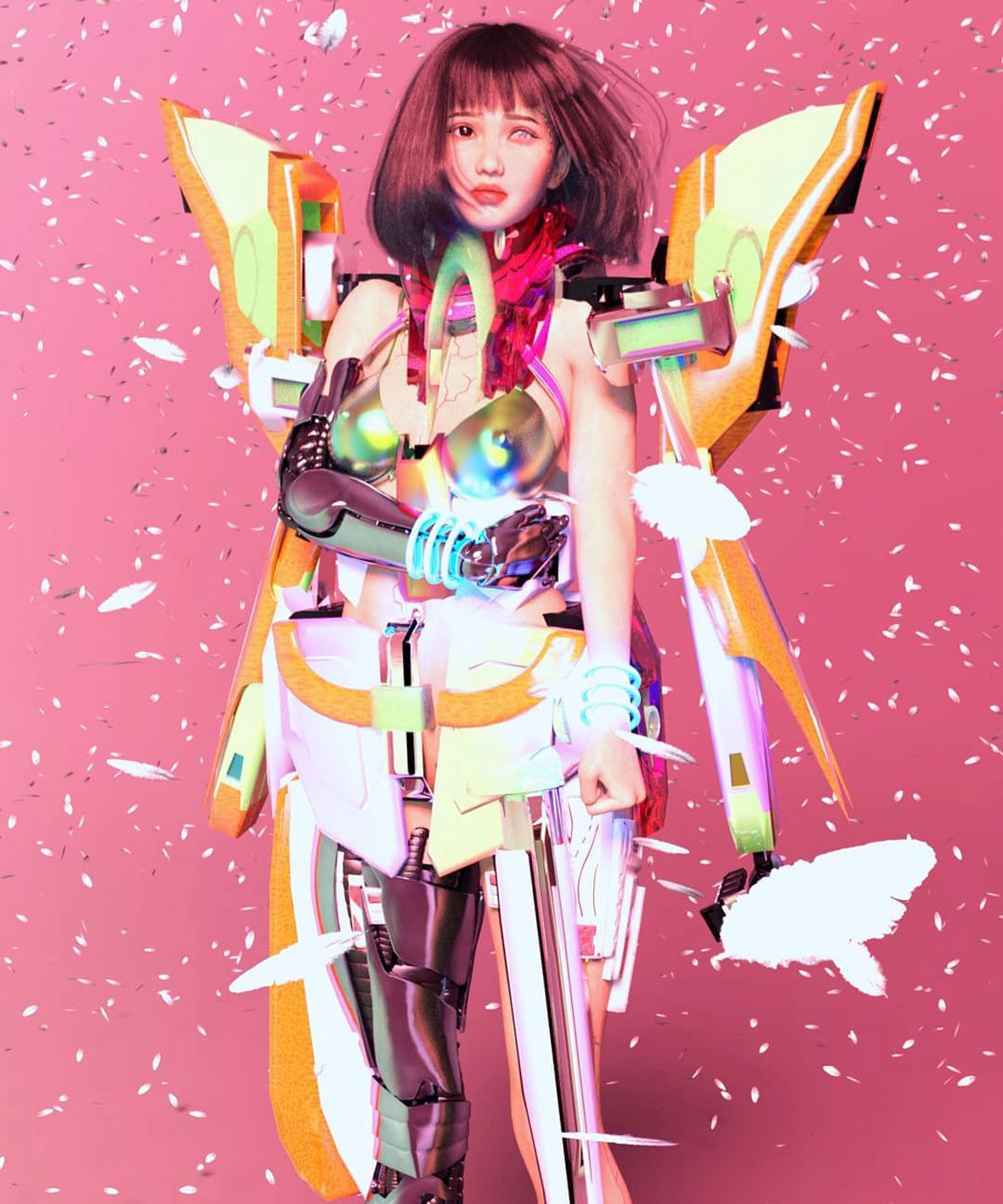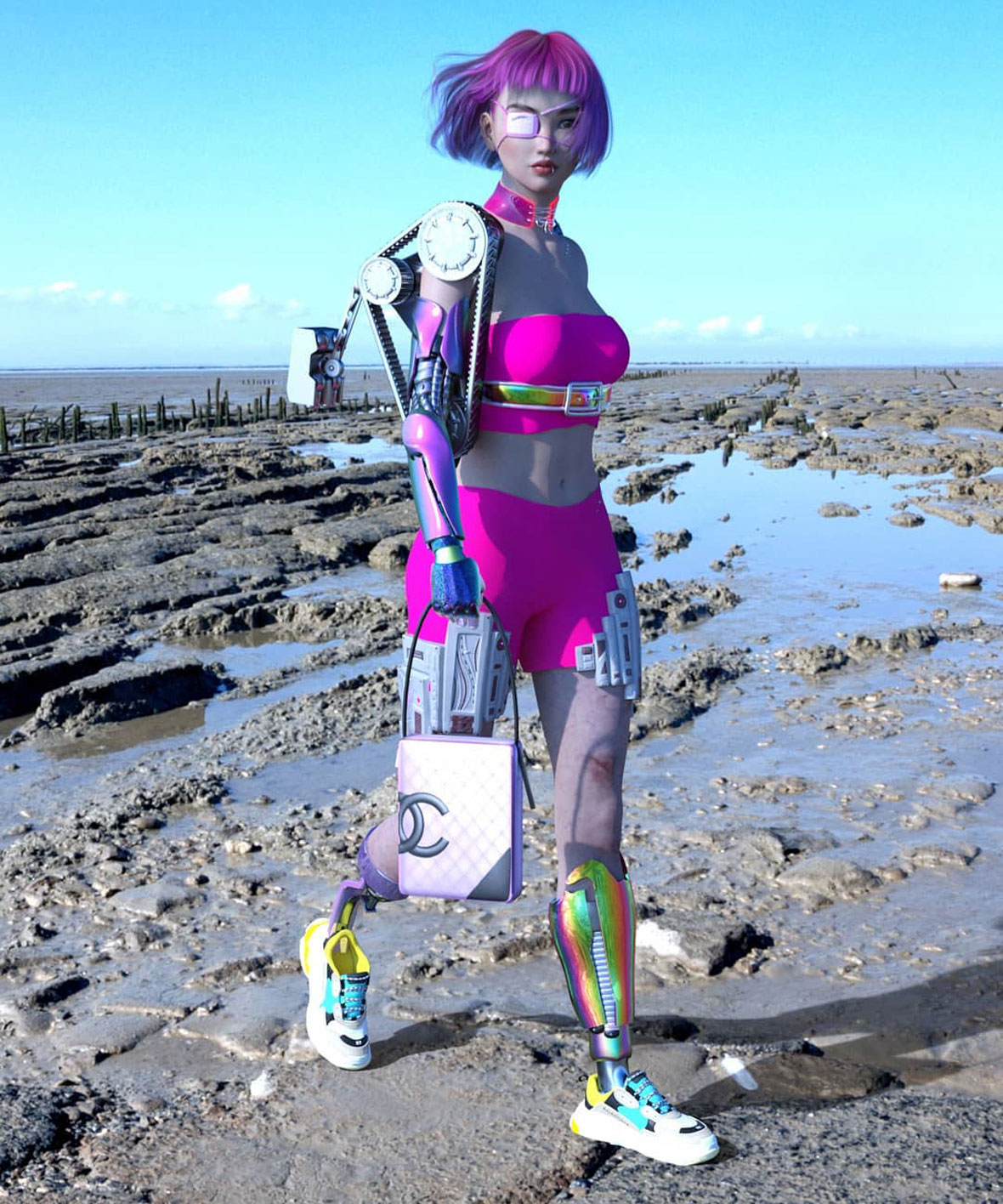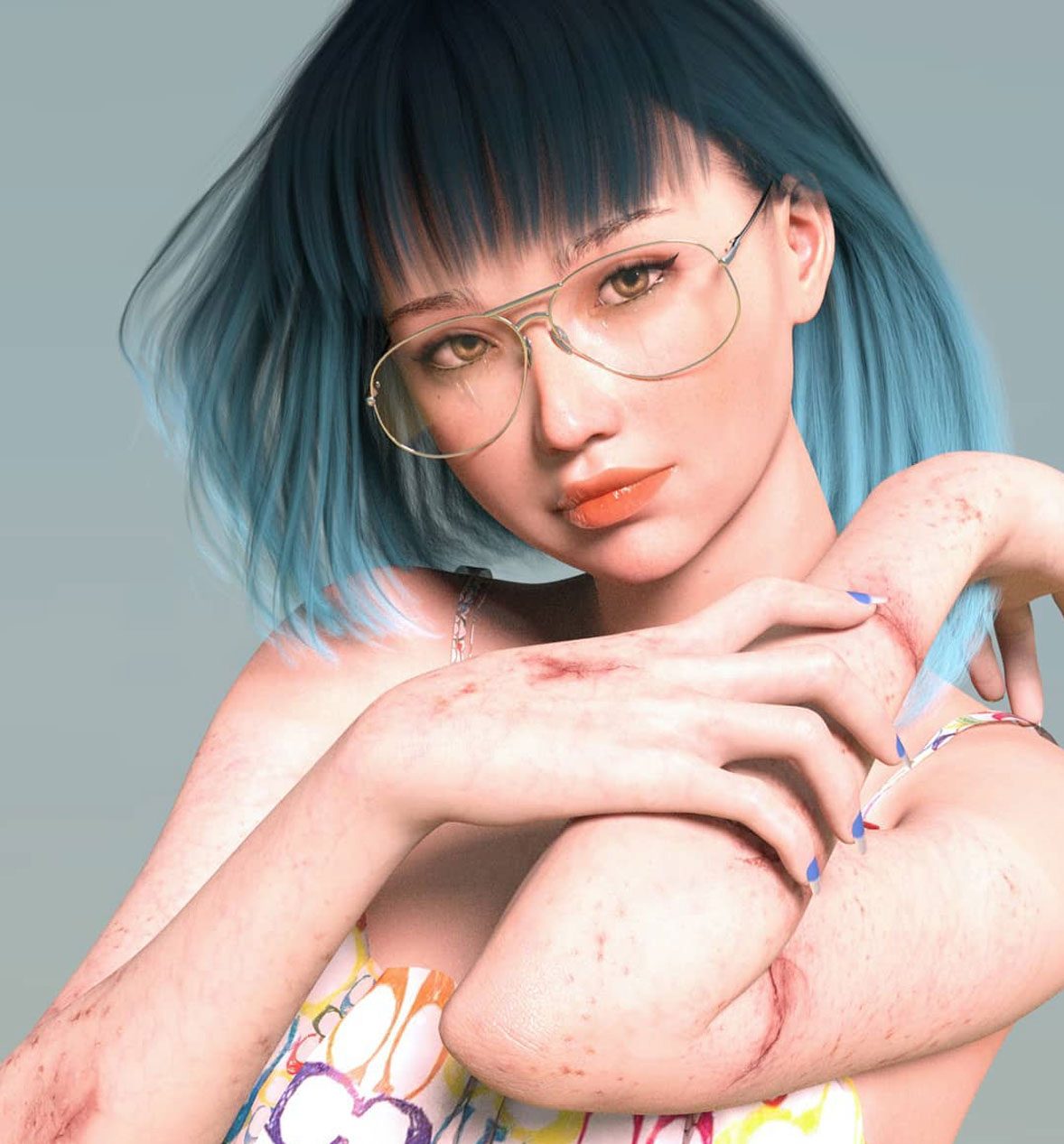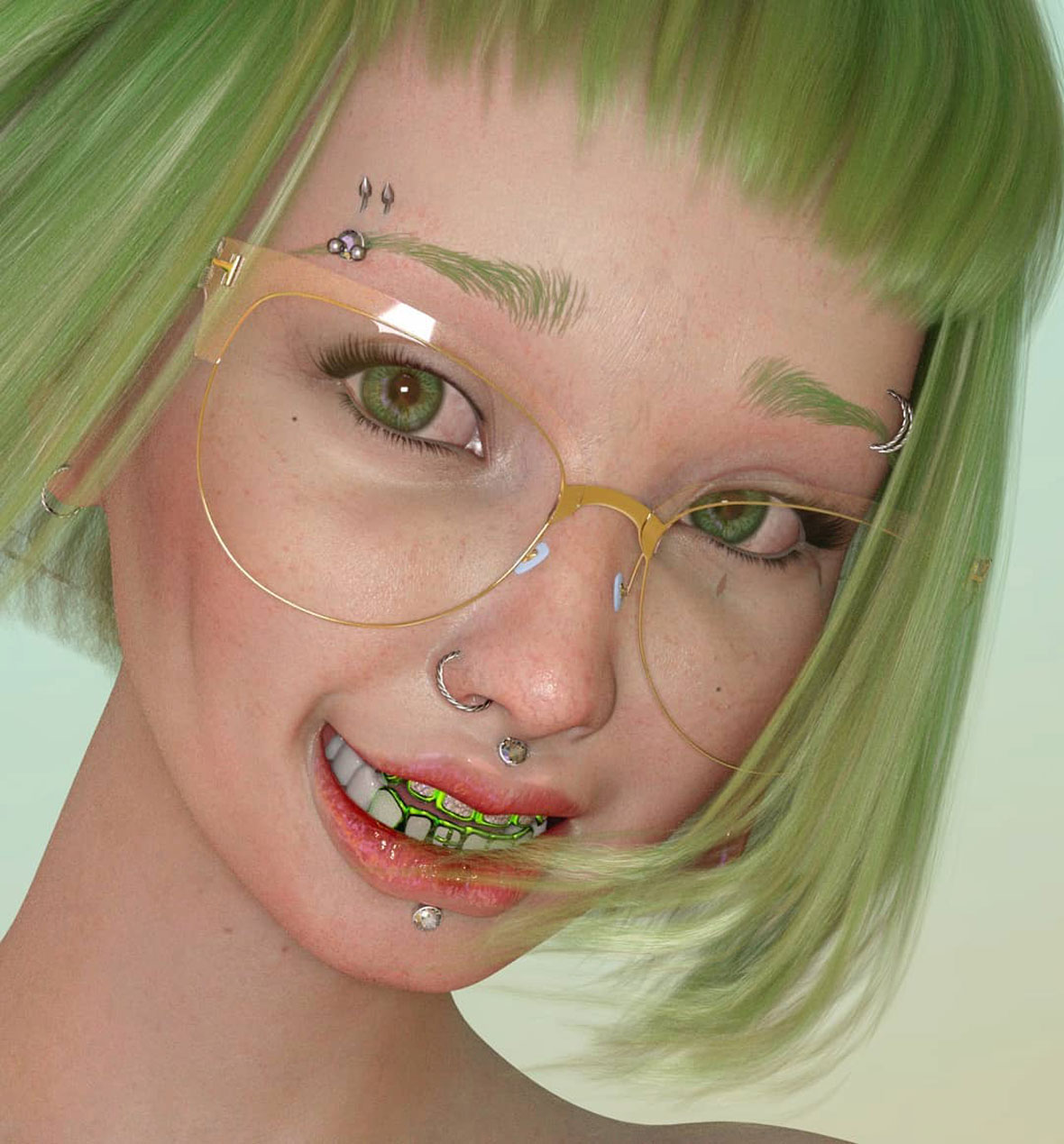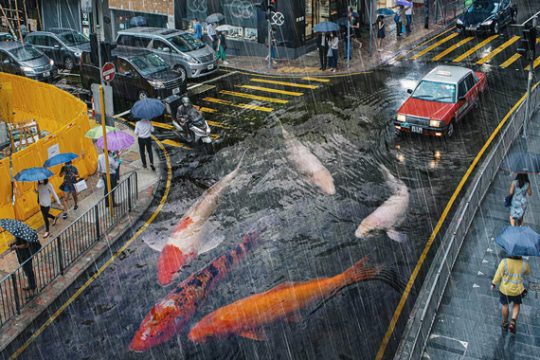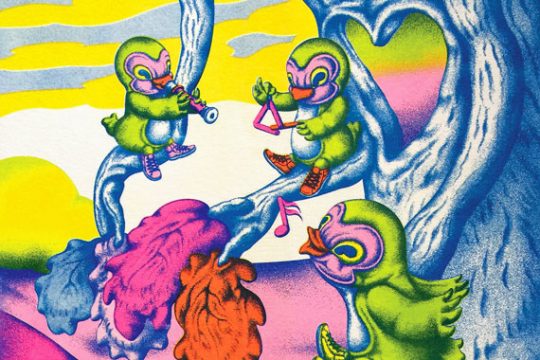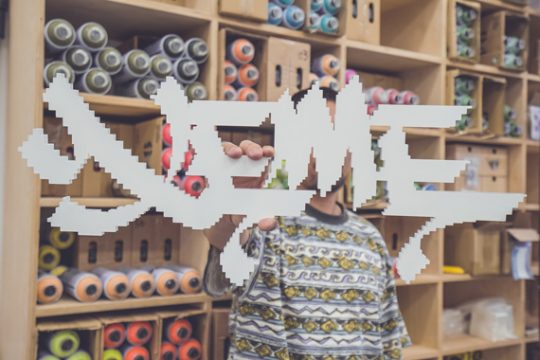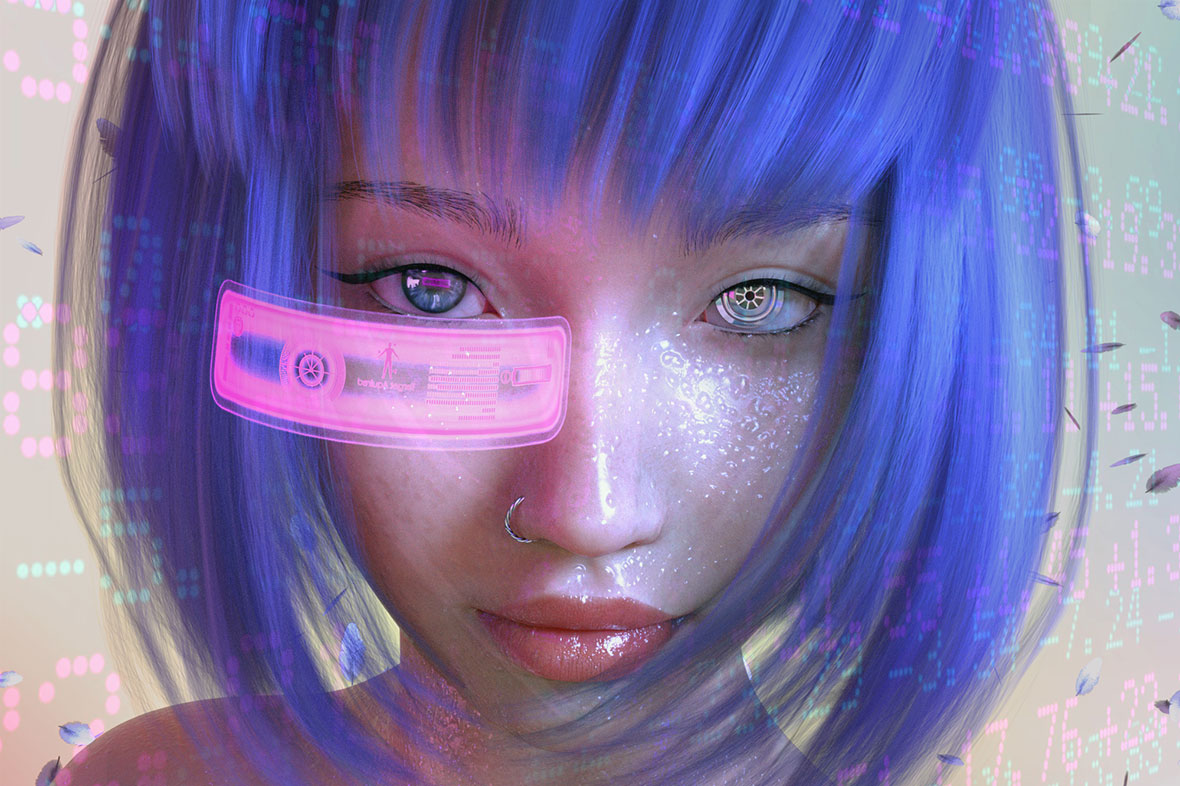
Every day, the line between IRL and URL gets a little more blurred, and one of the frontiers in this new digital landscape is the virtual avatar, a digital image used to represent someone on screen. Variations have been around for decades, from AIM Buddy Icons to early avatars in the online game Second Life, but only now are they good enough to pass as living things, breathing 0s and 1s instead of O2. Some people even prefer to use digital characters for their Instagrams rather than posting real selfies and portraits. And avatar accounts are sometimes more popular than real people’s, raking in endorsements and cash.
Chan Kayu, a digital artist in Hong Kong who works under the name Ruby Gloom, makes some of the most visible avatars on the web. Her personal and commercial work ranges from graphic art to 3D illustration to augmented reality. You can find her work in high-end fashion campaigns or viral social media posts.
每天,现实生活和数字世界之间的界限都在越变越模糊,而处于这个新数字世界前沿之一的,正是荧幕上的“虚拟人像”。从即时通讯软件 MSN 的头像到早期游戏“第二人生”的人物形象,虚拟人像早已经历数十年的演变。但直至今日,它才达到以假乱真的程度,可与真人相比拟。只是它们赖以生存的不是氧气,而是 0 和 1 的数字。而在 Instagram上,有人宁愿发表虚拟人像的图片,而不是真实的自拍和肖像照片。而这些账户有时候甚至比真人账户更受欢迎,吸引着源源不断的代言机会,带来丰厚的收入。
香港 3D 艺术家 Ruby Gloom 原名 Chan Kayu,她所创作的虚拟人像是当下网络上一些最受追捧的虚拟化身。她的个人和商业作品范围很广泛,既有平面艺术,也有 3D 插图和增强现实,在高端时尚活动或热门社交媒体帖子中常常能看到她的作品。
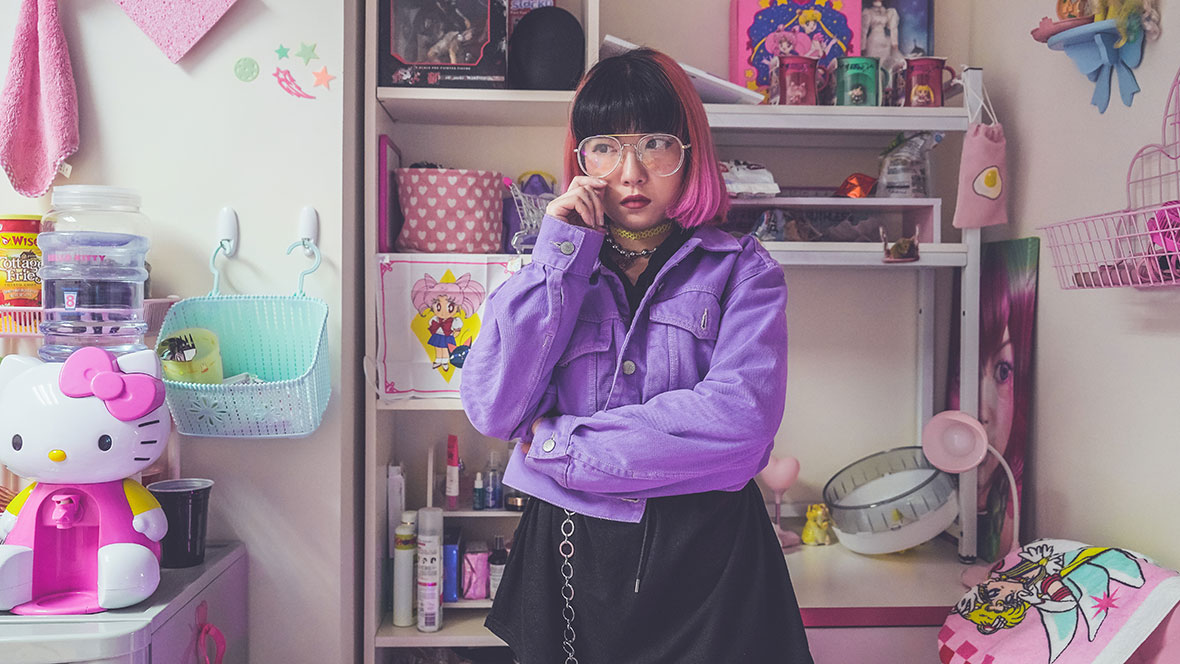
It might take a moment after visiting Chan’s Instagram to realize the photos aren’t entirely real. Her personal avatar is an exaggerated version of herself, a way of blending the real and the imaginary. She’s created many other avatars, sometimes for others, sometimes for herself. They’re not exactly idealized humans, though, and they all have their own individual differences and flaws.
第一次打开 Ruby 的 Instagram,你可能需要一会儿才意识到照片并非完全是真实的人物。她的个人头像是对自己夸大描绘,算是一种现实与想象的融合。她创作了许多虚拟人像,有时是给别人画,有时是给自己画。但是,这些人像并非是纯粹理想化的人物,相反,各个都有其不同和缺陷之处。
“Humans already have very fixed beauty standards already, so with avatars I want to create more diversity for them,” Chan says, while clicking through a gallery of previews on the computer in her studio, surrounded by an explosion of color and kawaii. “I give them flaws, wrinkles, freckles, and skin conditions. I do different skin colors. I used to do some green skin and alien styles, but I’m more focused on realistic stuff now.”
“人类社会已经有非常固定的审美标准了,所以在虚拟人像的造型上,我希望能创造丰富多样性。”Ruby 边说边预览着她工作室电脑上的作品,四周是缤纷的色彩和满眼“卡娃伊”元素。她说:“我会给他们加上瑕疵、皱纹、雀斑和不同的肤质。我也会制作不同的肤色。我以前曾创作过一些绿皮肤和外星人风格的形象,但现在更专注于现实风格的作品。”
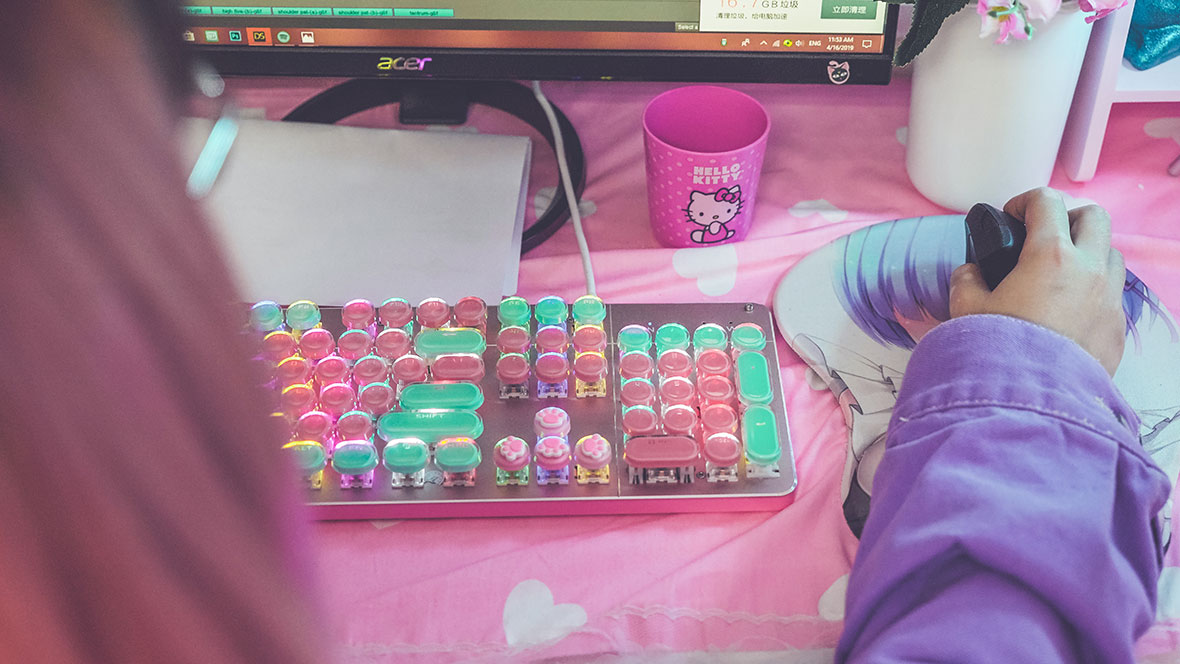
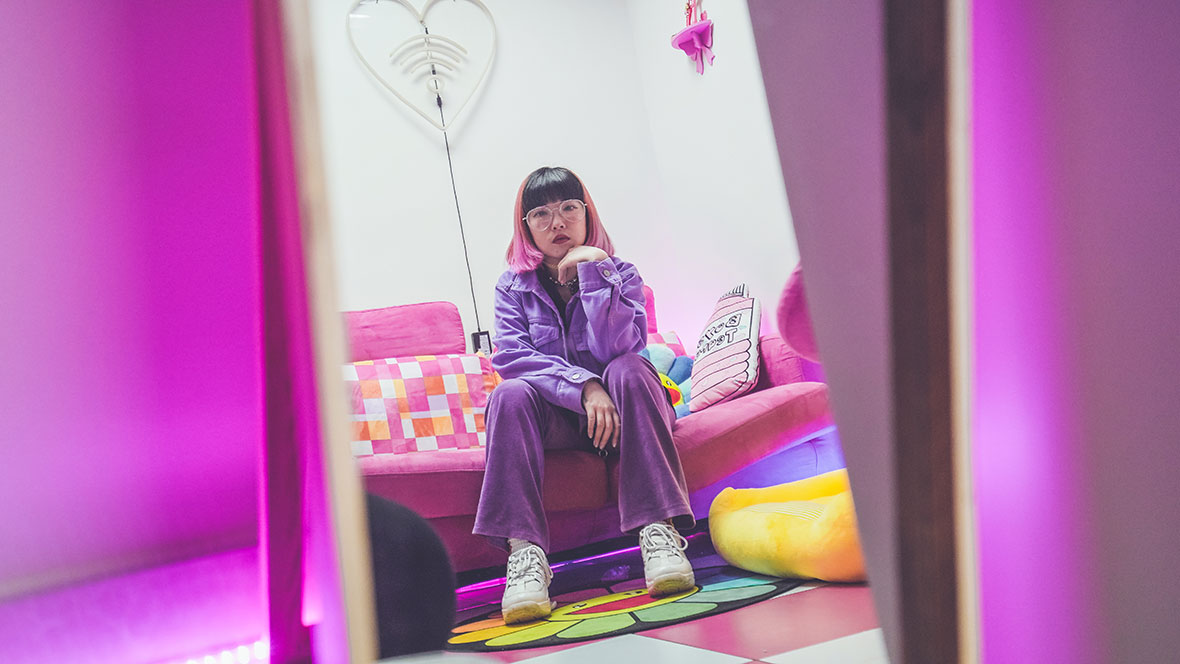
Her entry point into the creative world was as a Tumblr blogger in 2012, mainly posting her outfits of the day. She was a proto-influencer, with a devoted following before Instagram influencers were even a thing. The blogging went viral and her followers kept asking where she got her clothes, so she decided to create a label called WeeGirlsClub. People from all over the world outside Hong Kong were buying her pieces, mainly from the US. She never lost money but she stopped enjoying it because of the time spent on design, manufacturing, production, marketing, and customer service, all of which she handled herself.
Since she’d already been exploring digital art for a while, she decided that would be her next move: “I knew blogging wasn’t a long term career. I wanted to do something I loved, but I knew I had to make money so I could quit working. So first I taught myself clothing and then digital art.” Her career has been about staying ahead of the curve, spotting trends in the digital universe and navigating them as they change and die. “I used to be obsessed with influencers because you get money, attention, and all the products you want. But they used to be someone who was good at something. Now it’s just people faking talents to become an influencer. I don’t think it’ll last very long.”
她踏入创意世界的切入点是在 2012 年成为 Tumblr 博主,那时候,她主要是在博客上贴自己每日的服装造型。她可以说是现在网红的鼻祖,在 Instagram 网红出现之前就已经深受欢迎。她的博客爆红后,粉丝不断追问在哪里可以买到她的衣服,于是她决定创立自己的品牌 WeeGirlsClub。来自世界各地的人们纷纷前来购买她的作品,主要以美国为主。她是不缺钱了,但她也不太快乐。因为要花费大量时间在设计、制作、生产、市场推广和客户服务上,而所有这一切工作都由她一人承担。
由于当时的她已经探索数字艺术有一段时间,她决定将这种艺术作为自己的下一步:“我知道博主不是一份长久的职业。我想做自己喜欢的事情,但我知道我必须赚钱,这样才能辞职。所以一开始我先自学了做衣服,然后是制作数字艺术。”她的工作要求她一直走在时代的前端,发现数字世界的趋势,把握潮流的变化和更迭。“我曾经沉迷于成为网红,因为可以获得金钱、关注,以及你想要的所有产品。在以前,网红都是擅长某样事情的人,但现在很多网红只是装作很有才华。我觉得这些网红不会持续很长时间。”
While Chan is adept at profiting from the web, she doesn’t gloss over its downsides. “Companies like avatars because they can take full control of someone to represent their brand. People might not be able to relate to them after a while, so their influence could wane,” she says.
For now, Chan finds commercial work creatively satisfying, but in the future, she hopes to focus more on personal projects. Always looking ahead, she says her next goal is to create a 3-D printout of her avatar and travel around the world with it, posing with it in the street. And not just for a photo: she plans to stay with it for entire days at a time, like a street performer. This time, she wants to bring her digital creations into the real world.
虽然网络世界让 Ruby 获益不少,但对它的缺点,她也直言不讳。“很多公司喜欢用虚拟人像,因为这样他们可以完全控制代表品牌的形象。但一段时间后,人们可能无法再与这些虚拟形象产生共鸣,然后它们的影响力就会有所减弱。”她说。
现在,Ruby 在商业作品中也能获得足够的创意发挥,但在未来,她希望更专注于个人项目的创作。她的目光始终向前,她说自己的下一个目标是制作 3D 打印的虚拟人像化身,然后带着它周游世界,把它放在大街上拍照。不仅仅是拍照片,她还打算像街头艺人一样,与这个 3D 打印的虚拟人像相处一整天。这一次,她要将自己的数字作品带入现实世界。

Like our stories? Follow us on Facebook and Instagram.
Instagram: @rubyrubygloom
Contributor: Mike Steyels
Photographer: Mart Sarmiento
Chinese Translation: Olivia Li

